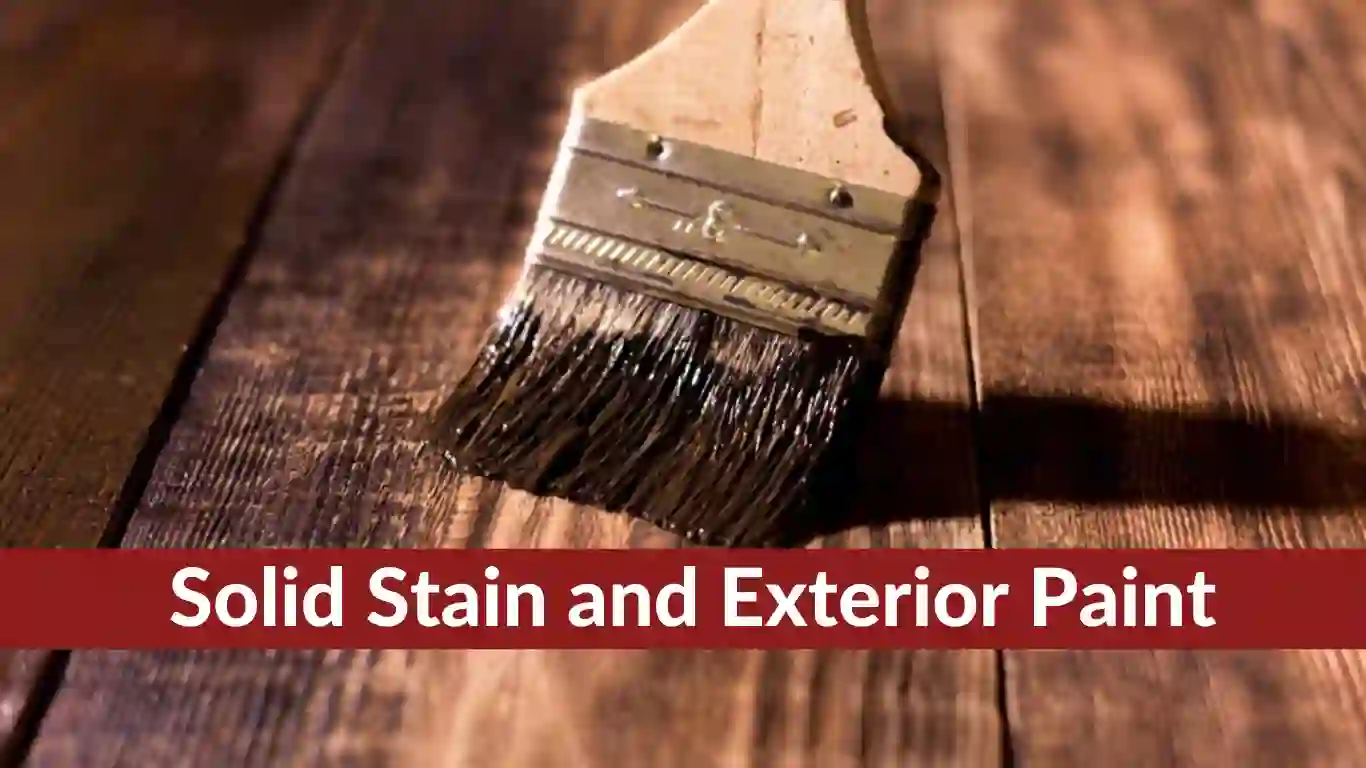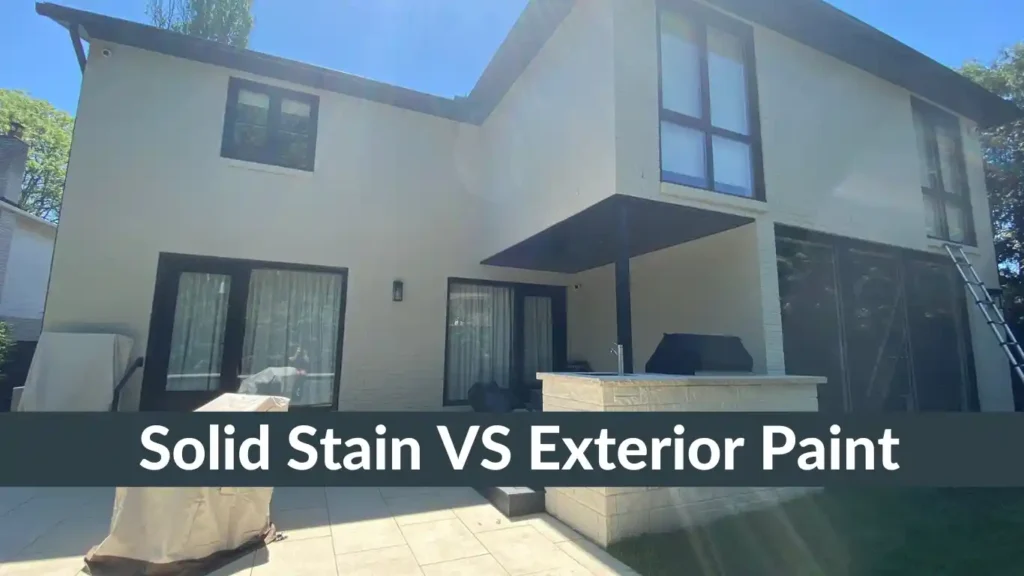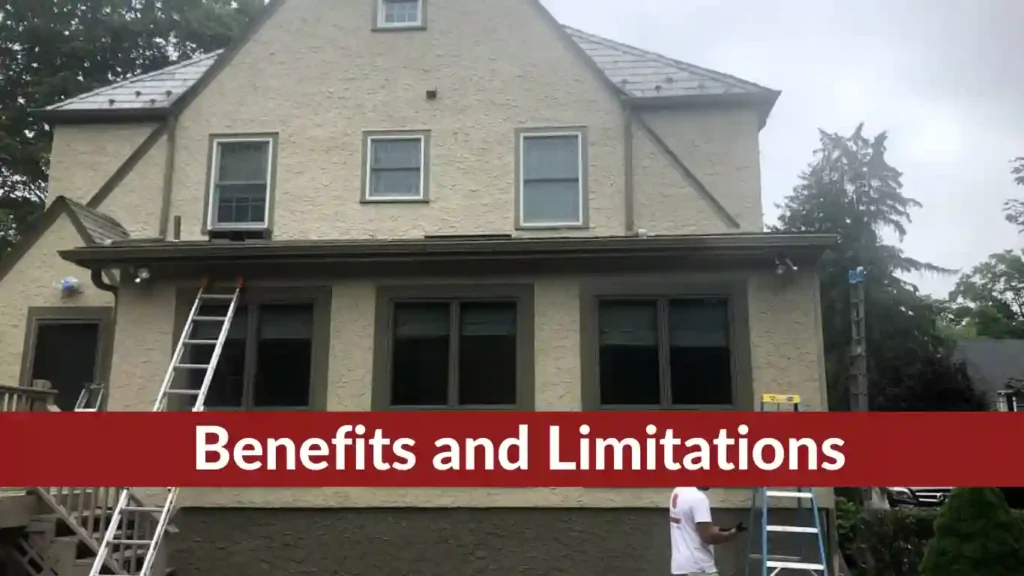
When gearing up for an exterior makeover, whether it’s painting or staining, understanding your options is crucial to achieving the best results for your specific requirements. At Skyview Painting, our team of professional painters often encounters inquiries about the suitability of solid stain for home exteriors. While solid stain can be an excellent choice in certain scenarios, it’s essential to weigh its pros and cons against those of exterior paint. Before you make a decision, consulting with experienced painters like us can provide valuable insights into whether solid stain or exterior paint is the better fit for your project.
Understanding Solid Stain – Solid Stain VS Exterior Paint

Similar to regular stain, solid stain is formulated to alter the color of a surface while preserving the natural texture of the wood. Positioned between paint and regular or semi-transparent stain, solid stain penetrates wood more than paint but less than regular stain. It imparts a solid-colored coating on wood without completely concealing the underlying grain. Multiple coats of solid stain can even make the surface resemble paint.
How Stain Protects Wood
Stain, including solid stain, serves not only as a coloring agent but also as a protective layer for wood. It helps shield the wood from the elements, preventing issues like rot, mold, and UV damage.
Choosing Between Solid Stain and Exterior Paint
When deliberating between solid stain and exterior paint, the condition of the surface being coated plays a pivotal role. Solid stain excels on fresh wood, acting as its own primer and penetrating better than paint. Ideal candidates for solid stain include new cedar siding, shake shingles, and fencing, as it efficiently seal the wood without requiring a separate primer. While applying solid stain over paint is generally not recommended, the reverse—painting over solid stain—is a viable option, making it a favorable choice for the initial years of a new home or fence.
Benefits and Limitations

While solid stain offers advantages such as texture retention and ease of painting over, exterior paint outshines it in terms of protection, durability, and color variety. Solid stain tends to fade faster than paint, necessitating more frequent repainting. When applied over a previously painted or sealed surface, solid stain can resemble paint but with a shorter lifespan and reduced protective qualities. In most cases, high-quality exterior paint proves to be the superior option. However, solid stain remains a practical choice when preserving the wood’s texture is a priority, and the surface to be stained is bare.
Additional Considerations
- Durability: Exterior paint generally provides a longer-lasting protective barrier against the elements compared to solid stains.
- Maintenance: Solid stain may require more frequent maintenance due to faster fading, while exterior paint often offers a more enduring finish.
- Aesthetic Preferences: Consider your desired look—whether you prioritize the natural wood texture (solid stain) or a uniform, long-lasting color (exterior paint).
Final Thoughts about Solid Stain vs Exterior Paint
In final thoughts, choosing between solid stain and exterior paint involves evaluating your specific needs, considering the surface type, and weighing the benefits and drawbacks of each option. For more detailed information tailored to your project, reach out to our experienced team at Skyview Painting. We’re here to guide you toward the ideal solution for your home’s exterior transformation.
Also Read our Blogs
Paint or Stain Deck || Paint a House with a Sprayer || How Can Painting Make Your Lifestyle Better || How to Paint a Wooden Door
Checkout our Painting Services
Drywall Services || Metal Painting Services || Commercial Painting Services || Industrial Painting Services || Stucco Repair || Wood Painting services

[…] or Stain Deck || Paint a House with a Sprayer || How Can Painting Make Your Lifestyle Better || Solid Stain VS Paint || How to Properly Paint Your Home […]